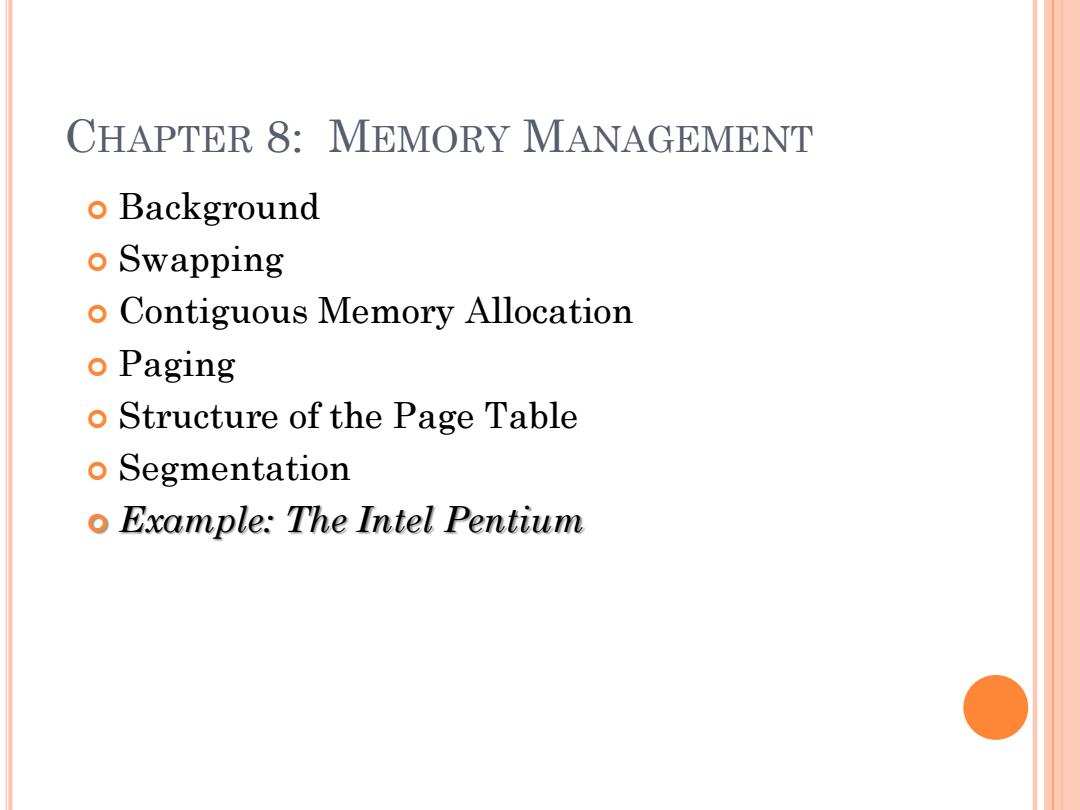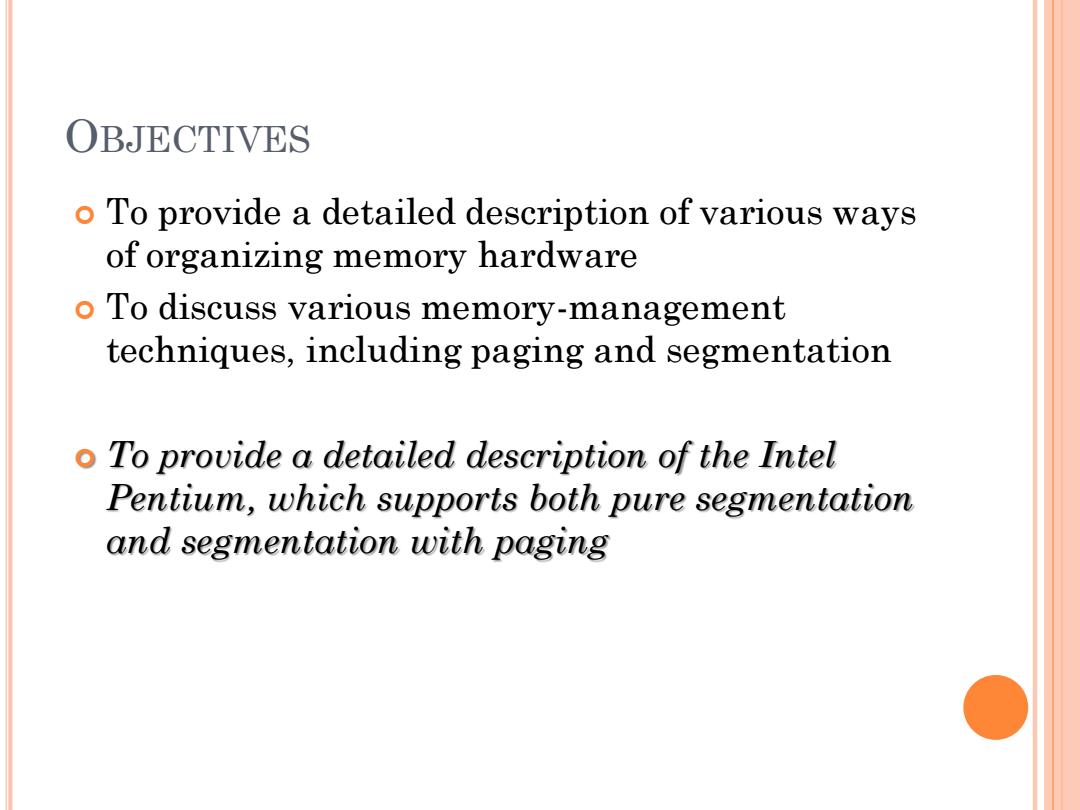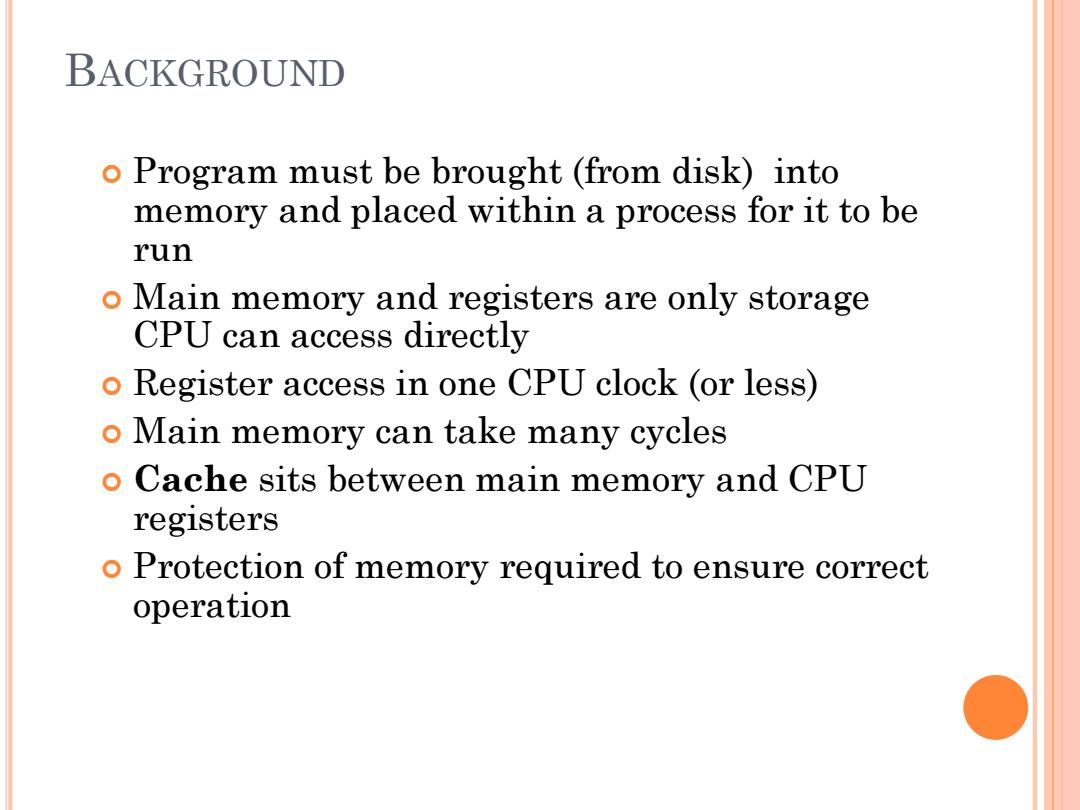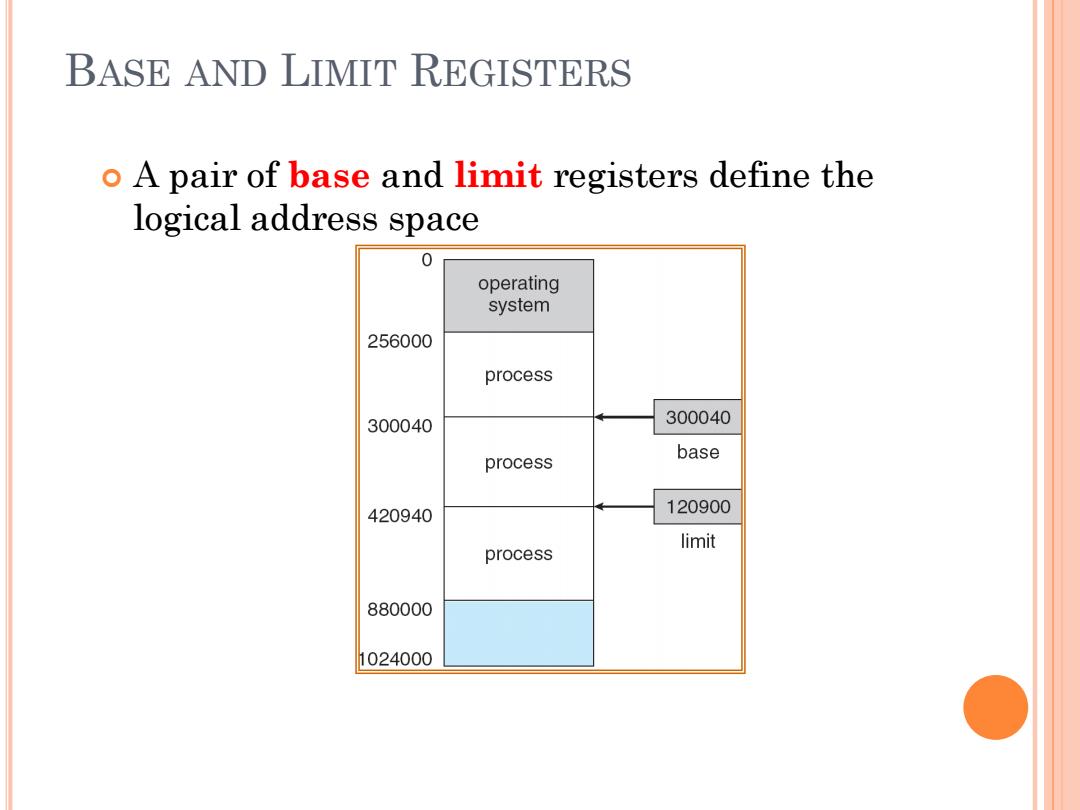
CHAPTER 8:MAIN MEMORY
CHAPTER 8: MAIN MEMORY

CHAPTER 8:MEmory mAnagement o Background o Swapping o Contiguous Memory allocation o Paging o Structure of the Page Table o Segmentation o Example:The Intel Pentium
CHAPTER 8: MEMORY MANAGEMENT Background Swapping Contiguous Memory Allocation Paging Structure of the Page Table Segmentation Example: The Intel Pentium

OBJECTIVES o To provide a detailed description of various ways of organizing memory hardware o To discuss various memory-management techniques,including paging and segmentation oTo provide a detailed description of the Intel Pentium,which supports both pure segmentation and segmentation with paging
OBJECTIVES To provide a detailed description of various ways of organizing memory hardware To discuss various memory-management techniques, including paging and segmentation To provide a detailed description of the Intel Pentium, which supports both pure segmentation and segmentation with paging

BACKGROUND o Program must be brought(from disk)into memory and placed within a process for it to be run o Main memory and registers are only storage CPU can access directly o Register access in one CPU clock (or less) o Main memory can take many cycles o Cache sits between main memory and CPU registers o Protection of memory required to ensure correct operation
BACKGROUND Program must be brought (from disk) into memory and placed within a process for it to be run Main memory and registers are only storage CPU can access directly Register access in one CPU clock (or less) Main memory can take many cycles Cache sits between main memory and CPU registers Protection of memory required to ensure correct operation

BASE AND LIMIT REGISTERS o A pair of base and limit registers define the logical address space 0 operating system 256000 process 300040 300040 base process 420940 120900 limit process 880000 1024000
BASE AND LIMIT REGISTERS A pair of base and limit registers define the logical address space